Are books with bratty characters worth it? I don’t get a lot of negative comments, but the ones I do hear over and over are about mischievous children’s book characters and how teachers and parents do not want kids exposed to them. Yesterday I had a thought-provoking reader comment on my 75 Books That Build Character post saying that kids can’t only learn how to be. They also need to learn how not to be. I couldn’t agree more. I love books with bratty characters because young readers recognize the bad behavior and even if they giggle at it they know it’s wrong. These books all offer great opportunities to talk and teach your children about right, wrong, and appropriate behavior.
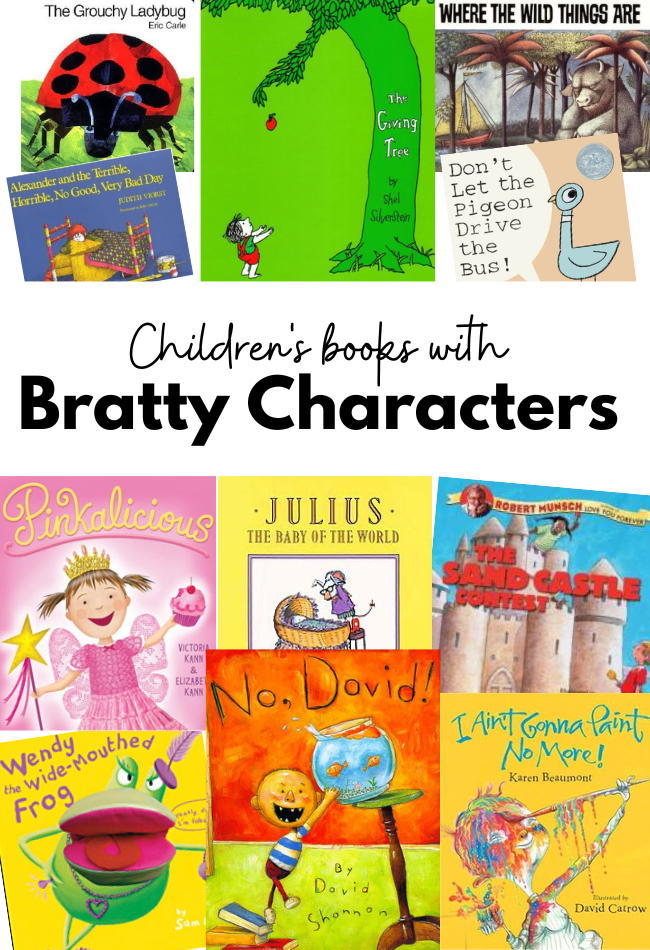
This post contains affiliate links
11 books with mischievous children’s book characters
I Ain’t Gonna Paint No More!by Karen Beaumont is guaranteed to entertain your child. Even my toddler was laughing and anticipating the rhyming text which tickled me to no end! Now I have had some parents in the past not be happy about the use of “ain’t” and the little boy in the story painting everywhere. I would counter that by saying people do use “ain’t” and kids do paint on things they aren’t supposed to you can use this as an example of what you aren’t supposed to do, and ask your child what they think should happen if they painted all over the house? As far as using “ain’t” I would play the traditional “It ain’t gonna rain no more” and explain that the author used that song as inspiration for the book.
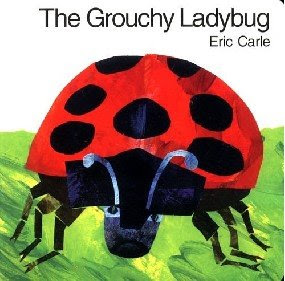 The Grouchy Ladybug
The Grouchy Ladybug by Eric Carle is more than a cute book about a crabby bug. The Ladybug is looking for a fight and each hour she finds a bigger and bigger animal to fight with until a giant whale’s tail unintentionally slaps her! I loved using this book to teach telling time, as there is a picture of an analog clock on each page. I would use a play clock and, as I read each page ask one child to come and set our classroom clock. Also, don’t be put off by the fact that the lady bug tries to pick fights, no animal takes her up on her offer, and you can spin that into a great lesson about not giving into people who are trying to pick fights.
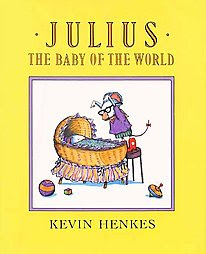 .Julius, the Baby of the World
.Julius, the Baby of the World by Kevin Henkes is such a funny book that I actually called my mom the day I bought it to read it to her over the phone. The book is about Lily who is adjusting to her new role as a big sister. The thing is, Lily isn’t adjusting well, and it’s hilarious because it’s so true! So often books depict older siblings happily welcoming babies into their lives, and that just isn’t always the case. Lily is not happy. She, unlike her parents, do not think this baby is special and she is openly hostile to Julius. I laugh out loud every time I read this book, I particularly love when Lily tells a passing pregnant mouse that she will regret being pregnant. I think this book opens the floor for a real talk about feelings when a new baby comes, it’s important to remember just because the big people are excited doesn’t mean the little ones are too!
Pinkalicious by Victoria and Elizabeth Kann. I was initially told about this book and its authors by another mom whose son loves it. So don’t think that just because the cover looks rather feminine that your boys won’t love this book too! The little girl eats far too many pink cupcakes, and before she knows it she has turned pink. To return to her usual self she needs to eat her vegetables. I like this book, and can see why kids do too. I don’t think that all characters can be perfectly pious, meek and mild but I do understand when parents are leery of introducing characters they see as disobedient to their kids. Seeing other children behave in ways not allowed at their house is a fantastic lesson for readers. It opens a dialog between you and your child.
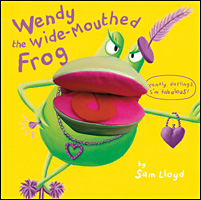 Wendy the Wide-Mouthed Frog
Wendy the Wide-Mouthed Frog by Sam Lloyd Like it or not, our kids will probably encounter someone who thinks they are better than anyone else (or they may go through a stage of this themselves). Wendy is a frog who thinks just that and criticizes the other animals in the wild for not being as great as she is. That is, until she meets a squid. At first, I thought, with Wendy poking fun at other animals, the book was somewhat negative. Although Wendy isn’t nice and does change her tune at the end (though doesn’t apologize to others for her behavior), the book does open up an opportunity to discuss how negative comments can make our friends feel bad. Wendy herself is a hand puppet that mom can use to bring Wendy to life, but the kids will love the squid page where they too can stick their hand in to be the squid’s tentacles. This moves kids from being passive listeners to interacting with the book too. ( reviewed by contributing writer Carrie Anne)
The Sandcastle Contest by Robert Munsch. I gave this book a really bad review last year. While it still isn’t my favorite Munsch book, I am taking back some of what I said. My son grabbed it the other day and after reading it with him ( last year it was over his head) I can honestly say I have had a change of heart. The tantrum the main character has when no one believes him about really making everything from the sand was a good teaching tool for my 2.5-year-old. We stopped and talked about anger, and deep breaths, and wrecking things when we were mad. I think this book could be a good way for parents to talk about anger and frustration without feeling like they are giving a lecture.
Where the Wild Things Are by Maurice Sendak probably doesn’t need an introduction, especially with the recent film adaptation. We read this book often, and my son randomly quotes the book throughout the day. Telling me to “Be still! ” just like Max tells the Wild Things. If by chance you are not familiar with this book, it’s a story of a little boy Max who is sent to his room for being wild, and his imagination turns it into another world, filled with Wild Things and freedom from rules for behavior. Ultimately though Max’s heart pulls him back home where he is loved most of all, even when he’s wild. How can anyone not love this book? It’s my absolute favorite.
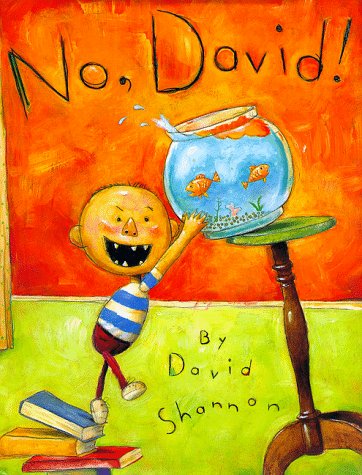 No, David!
No, David! by David Shannon is probably the author’s best-known book. It is the ultimate bad kid book. I love that after reading it with a class instead of calling David bad, we recognize his behavior is bad, but he is not. In it, we follow the misadventures of little David and his eventual disciplining and hug from his mom. This book is a wonderful icebreaker for talking about rules with a class. I have successfully used it with many groups of kids and my own as a reminder about rules and why we have them. Kids love watching other kids do naughty things ( and are quick to remind each other of the right way to do things), so this book is always a hit with toddlers on up.
The Giving Tree by Shel Silverstein. When I think of books with bratty characters this is the first book that comes to mind. I have been asked so many times why I haven’t ever reviewed this book. When I wrote the 75 Books that build character post I admitted I’d never read it to my kids. I couldn’t remember why but I knew I didn’t like the book. I love the author and read his poetry to my class while teaching and my own kids often. So I took it out of the library , read it to my son and remembered I hate this book. It makes me incredibly sad. I don’t like how horrid the boy is to the tree, how spineless the tree is and I never saw it as a lesson in giving like so many do but a lesson in taking . I read it to my son, and we talked. We had a great talk about taking advantage of those who love us, and how it hurts everyone. When a comment was left yesterday suggesting I don’t think books like this are useful I had to include the book in today’s post. Yes, this book is useful, without a doubt and it should have been included in previous posts. I know many of you probably love it. It just makes me so sad I will read it one more time to my daughter when she is older, and we’ll have a talk about it, but it’s never going to have a permanent spot on my shelf.
Alexander and the Terrible, Horrible, No Good, Very Bad Day by Judith Viorst was another childhood favorite I have enjoyed sharing with my son. I was surprised when I asked teachers which books with bratty characters they love this came up. I don’t think of Alexander as bratty, but he often tops the list of mischievous children’s book characters. This book is beautiful, even though it may take a few reads to see. It’s not a story about a whining little boy, so much a lesson that sometimes things do not go our way. Days can suck. It’s just the way it is. As a child, I related to Alexander’s feelings of frustration and things being unfair. How often to you hear a child say “No Fair!” probably a lot. This book taps into that feeling, being little is hard but just because you are mad, or your day was bad doesn’t mean you get your way. Great book to talk about anger and frustration with your child, and it’s funny too!
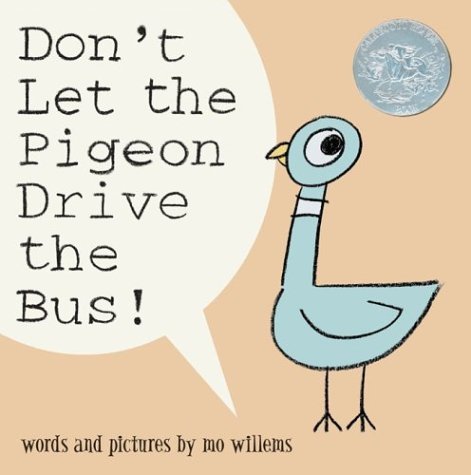 Don’t Let the Pigeon Drive the Bus!
Don’t Let the Pigeon Drive the Bus! by Mo Willems might not need much of a review as I don’t know many parents who haven’t laughed along with their kids reading this book. But if you have never read this book let me tell you about it and why so many of us think it’s hilarious. The book opens with a bus driver asking readers to do him a favor and not let the pigeon drive the bus, easy right? Well just like my 5-year-old son who is practicing for the negotiator of the year award this pigeon is relentless. When I asked my son what his favorite part of the book was he giggled loudly while telling me that he loves the pigeon’s tantrum. Kids love seeing characters in books display the behavior that they want to do but only let slip through the cracks every now and then. I love when great underlying connections to kids come in such a goofy package. Love this book.
What book with less-than-well-behaved characters do your kids love?
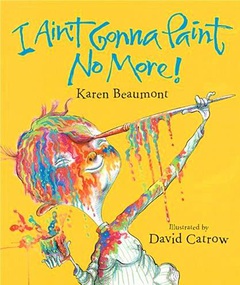
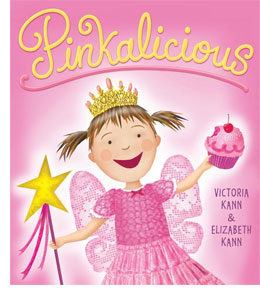
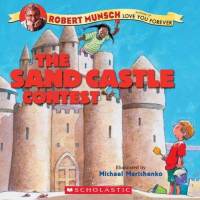
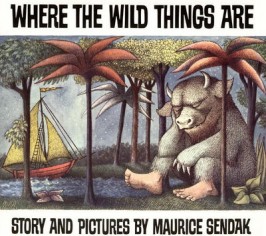
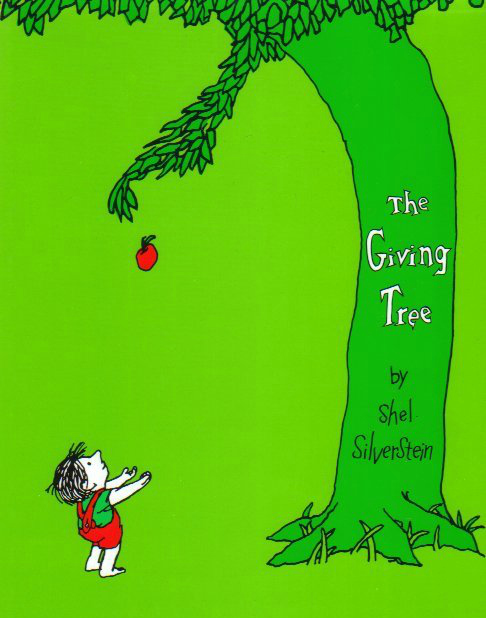
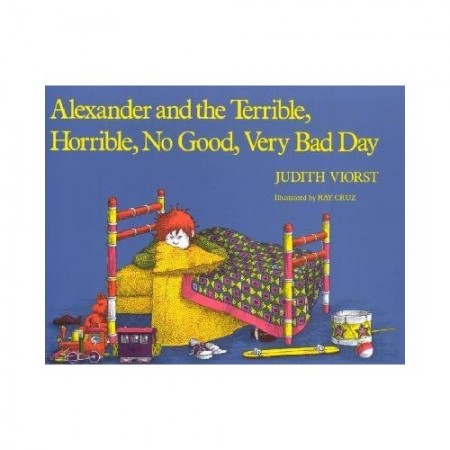
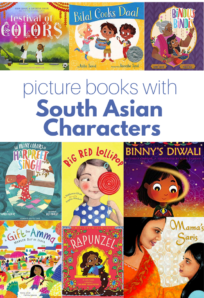
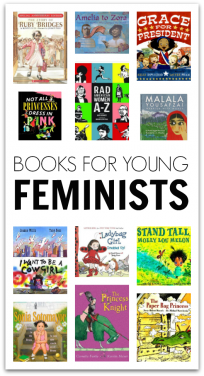
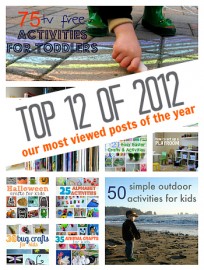
Hilary says
My children love all “Eloise” books … what a character that girl is. 🙂
Caroline says
I love Llama Llama Red Pajama as well as the other books in the series. Llama llama gets very upset and throws a tantrum. His mother sets a boundary but responds with love. Kids can relate to the feelings and are soothed by the affirmed connection between mother and child. My son loves it, especially when I get animated during the tantrum.
Erin says
My daughter absolutely adores the Lorax by Dr. Seuss. This started well before the movie came out. At 2 and a half, she has the whole book memorized. It has actually opened quite a few conversations between us, and I use examples from it frequently to explain things to her. We spoke about the importance of sharing, and not taking things from others just to benefit yourself. Also, the importance of helping take care of the environment. “Mommy why is there a black garbage and a blue garbage?”
“The blue bag is going to be made into new stuff for other people to use, that way we don’t have to cut down as many trees.”
“Ohhhh! It’s like the Lorax says!”
I have loved this book for so long, and am glad that it has gone more main stream with the new movie adaptation.
Katherine says
We love Lilly and the Purple Plastic Purse. Our favorite part is when Lilly’s teacher, Mr. Slinger, tells her that today was difficult, tomorrow will be better. As a mom, that line has helped me with many a day that ended badly. We all need hope to face the next day.
admin says
So true. Those words have been said , sometimes through exasperated tears , here as well.
Jamie @ hands on : as we grow says
The Giving Tree. I’m also bothered by it. It was given to us after my mother-in-law passed away, I think because they thought it was a good portrayal of her. She was very generous and always gave to everyone. But, I can’t help to think every time I read it that she was so generous to us and all we did was take take take until there was nothing left of her. It makes me cringe every time and very, very sad.
I’m saving this list though, I agree, bratty (bad) behaviors are also great to point out in story lines and open up great discussion with the kids!
Lily says
I completely agree about bratty characters. There is something to be said for living vicariously through fictitious characters. It’s a perfectly appropriate outlet. (No YOU shouldn’t always run around screaming and roaring like a monster, but you can enjoy reading about Max doing it!) I work with children who of course do not like being reprimanded but love to read about other children doing naughty things and getting in trouble. It’s very unusual that a child reading these books is cheering the naughty child on, rather they relish the opportunity to play the role of the adult and scold the character!
admin says
Lily your words are spot on. They do usually scold the character even if a few giggles escape while reading.
The Iowa Farmer's Wife says
Great post and insights! We’ve read a lot of these and when we read books with bratty/disobedient/naughty characters I ask her a lot of questions. We recently read one where the mama goose was calling her baby inside and he kept telling her no and I’d said, “Is that baby gosling listening to his mama?” And she’d say “Noooooo.” 🙂 And while I loathe Pinkalicious, I’ve been known to say “You get what you get and you don’t get upset.” 🙂
Bailey says
Hi, I know it’s a bit late, but what book are you referring to? I NEED it! I have a daughter who recently turned 3 as well as began a part time preschool program…They pick up so much from other children. While my daughter is normally a sweet, loving, nurturing, perceptive & VERY sensitive, she is pushing those limits & trying the UGLIEST behaviors! It is killing me!! The one line you wrote about the duck saying “NO” is what prompted me to write this.
Please let me know!!
Thanks 🙂
Darlene says
Junie B. Jones books. Great teaching moments for good/bad choices!
Caitlin says
Well said!
Michelle says
Noisy Nora (by Rosemary wells) I loved loved loved that book growing up. And now I read it to my sons. (wells is the creater of max and ruby? Where are their parents?) it tells the story of a noisy “toddler/preschooler” who throws bangs on the wall and throws her sisters marbles down the stairs because no ones paying attention to her. I like both sides of the story Nora needs to wait for everyone to be patient, but at the end she “runs away” so her parents and sibling get nervous where she went and “find her” in the closet and are rejoiced!! It says to my kids and me we need to stop sometimes and pay attention to each other. Also sometimes we need to wait, it’s not nice to “throw marbles down the stairs” because we’re mad. Good read (nobody likes Minerva is also very similar and “her dad holds her hand” is the sweetest moment in that book)
Heather says
I’m the Best! by Lucy Cousins, of Maisy fame, is a favorite. It’s about a dog who points out to his friends that he is the best at everything. They have some interesting responses, and it teaches a good lesson about bragging.
Kathy Zielinski says
Perhaps you’ll enjoy the parody of the Giving Tree entitled, “The Taking Tree” by Shrill Travesty. It’s a story of a selfish boy from the perspective of the abused tree. It has a comical, albeit morbid, ending. Not exactly the best book for a 5 year old, but will give parents a chuckle!
http://books.simonandschuster.com/Taking-Tree/Shrill-Travesty/9781442407633
admin says
I need to find that – I love parodies.
Ann says
The Giving Tree has been on my “hated” book list for years! I dislike it because the tree is a “she” and in the end when she is “all used up” HE sits on her!
The only other book on that same list is “I’ll Love You Forever” with the mother climbing a ladder in the middle of the night!!! UGH is all I can manage to say!
admin says
Ann many of our readers hate it too – we did a post about hated books here : https://www.notimeforflashcards.com/2011/01/books-people-hate-whats-your-take.html
Jess says
ooh! Yes! WEIRD and creepy is what I thought after reading “I love you Forever”. Unhealthy relationship anyone? I know it’s meant well, but no room in this house for that book.
YOU are My I Love You, however, is adorable and a must read.
Robin says
I totally agree! I cannot stand “I’ll love you forever!” Why cant the mother be a guest in her own son’s house? Why does she have to look thru the windows and sneak in like a thief? And I’ve never much cared for “The Giving Tree”. Neither books are in my home or PreK class.
vicky says
I can’t understand these comments about THE GIVING TREE and LOVE YOU FOREVER. These books are pointing out an emotional reality. It seems like some of you relate so much to the books you are in denial. Kids are not dumb and they recognize what’s going on around them.
Tiffany says
Its an oldie but goodie but Pookins Gets Her Way was a great bratty character about not being spoiled. Our neighbors have a daughter the same age as mine and when she’s acting up my daughter will whisper to me “She’s acting like Pookins!” and knows not to behave that way. http://www.amazon.com/Pookins-Gets-Her-Helen-Lester/dp/039553965X in case you want to check out the book.
Angie says
I agree that bratty characters can make for really good teaching moments. I think it really depends on the age of the kids, though. Older kids are more likely to remember the take-home message but younger kids may recall the characters negative behavior – but not that it is negative! (If you’ve taken an intro-psychology class you probably learned about Albert Bandura’s “Bobo doll” experiments.) Having a discussion with your kid is far better and more in-depth than just reading a one-line moral at the end but it’s still something to keep in mind. My own daughter is 2.5. She can handle bigger-kid books (picture books with paragraphs of text per page) but I’m still careful about these things because she doesn’t have the emotional maturity or insight to get some of the underlying issues. Talking about it as we go through the book (instead of all at the end) really seems to help.
admin says
Absolutely a parent or teacher would need to facilitate a discussion with the audience about the behavior. I have had students as young and younger than your daughter correct David’s behavior while reading No David! Books are no different than TV in that kids still need guides until they are mature enough to take the message in alone.
rebecca at thisfineday says
Very thoughtful list and great suggestions in the comments as well. My biggest pet peeve with books is “ugly language” like stupid and dumb. I sometimes do some censoring when reading to the girls…
vicky says
Censoring picture books, what a great use of time. Language has context. If you heard someone say he was “stupid happy,” is that ugly? If you see a negative character using the word stupid, is that not a valuable example–that kids should not be like that? Does sheltering kids from words other kids use all the time is help them adjust?
Lynda says
From Winnie the Pooh to Little Red Riding Hood, everyone has a literary character they love and adore and will continue to inspire them at any age. See, the best stories are not just about the interesting set of events: it’s about the characters.